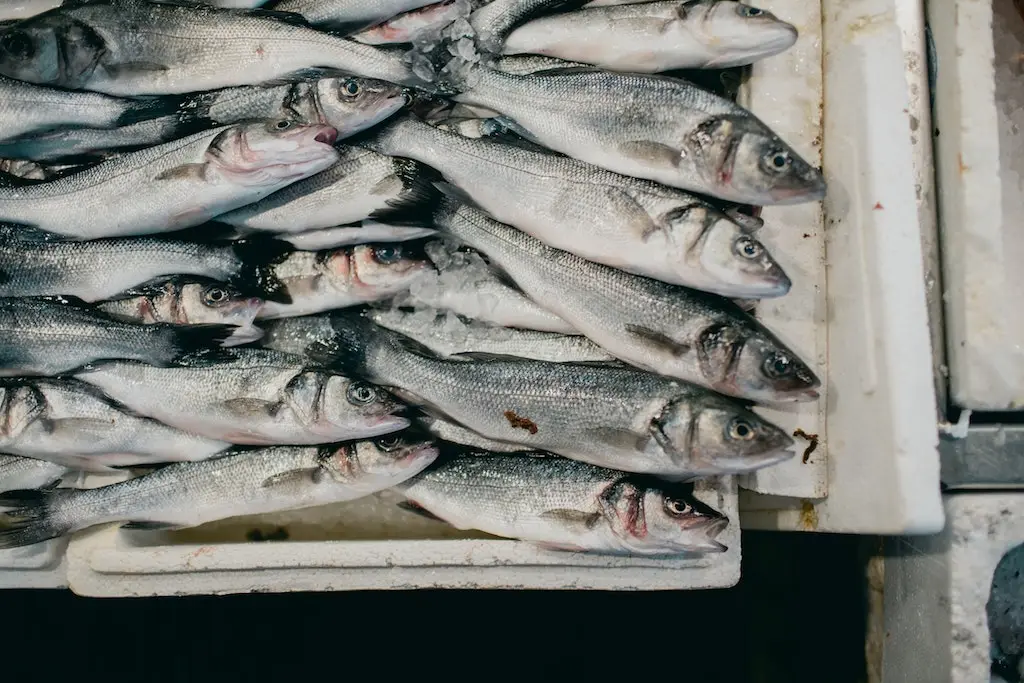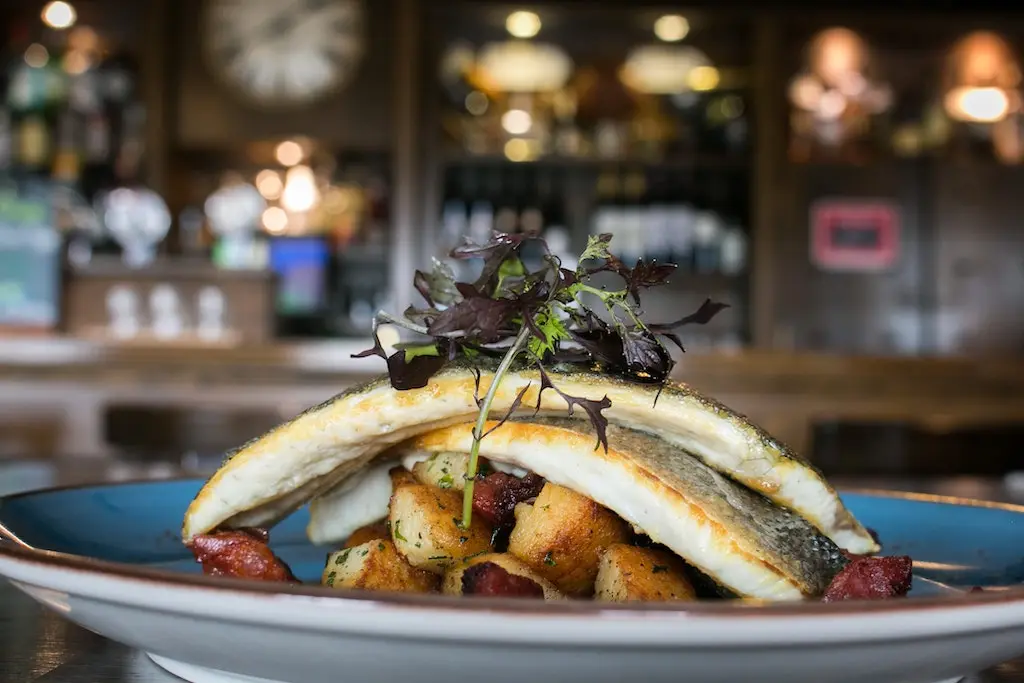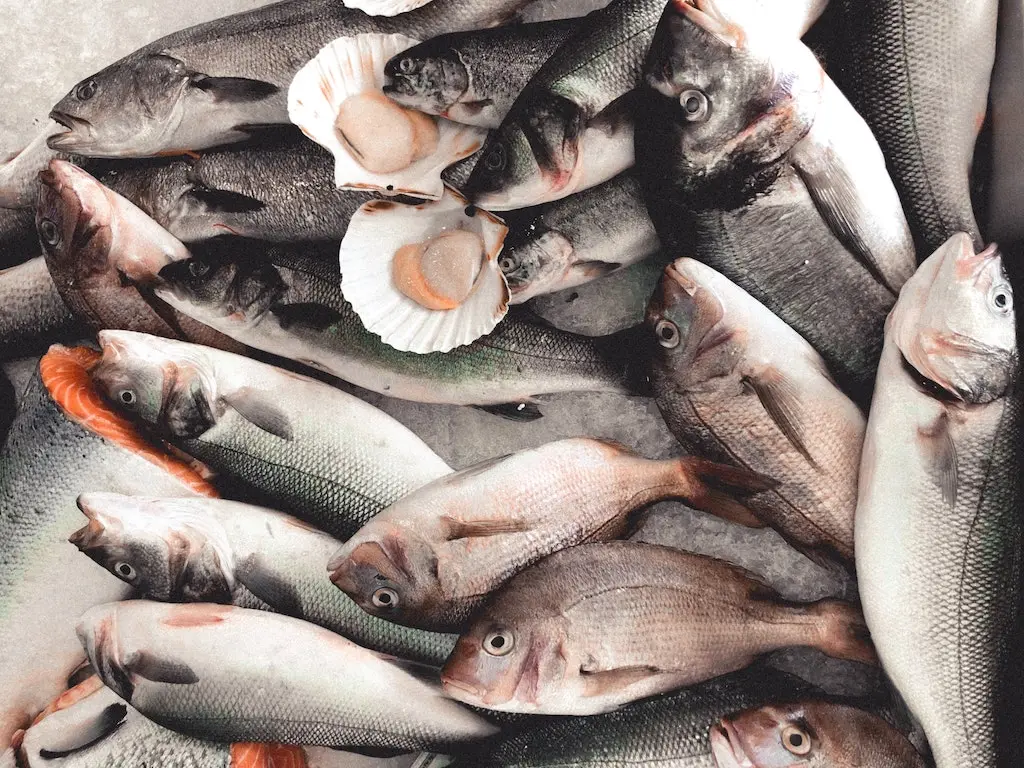Last updated on May 31st, 2023
- What Does Trout Taste Like: Unraveling the Flavor Mysteries - August 2, 2023
- Best Fishing Bibs Tested & Reviewed: Buyer’s Guide - July 19, 2023
- Fishing for Whiskers: Best Bait for Catfish - July 12, 2023
If you’re an angler or a fisherman, then the question of whether or not you can eat bass is probably one that has crossed your mind. Bass fishing is a popular pastime among recreational fishermen and it’s no wonder why – there are several species of this fish to choose from! But have you ever wondered what bass tastes like? And if so, how do we prepare and cook it? Can we even eat raw bass? The answer to all these questions lies in our article on ‘Can You Eat Bass‘. We’ll be exploring different ways to enjoy this tasty catch including grilled, cooked and raw options. So don’t miss out – read on for everything you need to know about eating bass!


Table of Contents:
- What is Bass?
- How to Prepare and Cook Bass?
- Different Ways to Eat Bass?
- What Does it Taste Like?
- Conclusion
- FAQs
What is Bass?
Bass is a type of fish that belongs to the family Centrarchidae, which includes sunfish and black bass. Bass are found in both freshwater and saltwater environments, but they are most commonly found in shallow waters near shorelines or submerged vegetation. They have an elongated body with large scales, two dorsal fins, and a forked tail.
Types of Bass: There are several different species of bass that can be found around the world including sea bass, striped bass, largemouth bass (Micropterus salmoides), smallmouth bass (Micropterus dolomieu), spotted bass (Micropterus punctulatus) and white perch (Morone americana). Each species has its own unique characteristics such as size, coloration patterns, habitat preferences and diet.
Where to Find Bass: Depending on the species you’re looking for there may be specific areas where you can find them more easily than others. Sea bass tend to inhabit deeper waters while striped or largemouth will usually stay closer to shorelines or submerged vegetation like weeds or logs. Smallmouth prefer rocky areas with plenty of cover while spotted prefer clear water with sandy bottoms. White perch typically inhabit brackish estuaries along coastal regions throughout North America from Maine down through Florida’s Gulf Coast region.
All types offer high levels of protein as well as essential vitamins and minerals like Vitamin B12 and Selenium, which help support healthy brain function among other things. They also contain Omega-3 fatty acids, which help reduce inflammation throughout the body, making them a great choice for those looking to maintain good health overall.
Bass is a type of freshwater fish that can be found in many different parts of the world. It is also high in protein and other essential nutrients, making it an ideal choice for meals. With the right preparation techniques, bass can make for delicious dishes – let’s look at how to prepare and cook bass.
Key Takeaway: Bass are a type of fish found in both fresh and saltwater environments, offering high levels of protein as well as essential vitamins and minerals. They contain Omega-3 fatty acids to help reduce inflammation throughout the body, making them an excellent choice for those looking to maintain good health.


How to Prepare and Cook Bass?
Grilling: Grilling is a great way to cook bass and bring out its flavor. Start by preheating your grill to medium-high heat, then lightly oil the grate with vegetable or olive oil. Next, season the fish with salt and pepper or your favorite seasoning blend. Place the bass on the hot grill and let it cook for about 4 minutes per side until it’s cooked through. Make sure not to overcook it as this will make it dry out quickly.
Baking or Roasting: Baking or roasting bass in an oven is another easy way to prepare this delicious fish. Preheat your oven to 375°F (190°C). Season both sides of the fillet with salt and pepper, then place them onto a baking sheet lined with parchment paper or aluminum foil. Bake for 15-20 minutes depending on how thick your fillets are until they’re cooked through but still moist inside.
Boiling or steaming can be done in just a few simple steps. Fill a large pot halfway full of water and bring it up to a boil over high heat before adding 1 teaspoon of salt per quart of water used into the boiling liquid. Once boiling, add in your desired amount of cleaned whole bass fillets along with any herbs you wish like parsley, thyme, rosemary etc., cover the pot tightly and reduce heat slightly so that only small bubbles appear around edges; steam for 10-15 minutes until fish flakes easily when tested with fork at thickest part near bone line if present; remove from pan immediately after cooking time has elapsed using slotted spoon/spatula/tongs etc., drain off excess liquid if necessary before serving hot right away while still moist and flavorful.
Frying is one of my favorite ways to enjoy this tasty seafood dish. Heat some oil in a skillet over medium-high heat before adding seasoned pieces of cut up bass fillet into the heated pan. Fry each side for 3–4 minutes until golden brown and crispy outside but still juicy inside. Transfer fried pieces onto a plate lined with paper towels and serve warm with your favorite dipping sauce such as tartar sauce and lemon wedges alongside freshly boiled potatoes and vegetables like carrots and broccoli florets as well as salad greens dressed with olive oil vinaigrette dressing… yum.
Smoking or Curing: Smoking is an excellent way to preserve fresh caught fish while also giving them amazing flavor depth that cannot be achieved otherwise. To smoke whole filets start by brining them overnight in cold salted water; the next day, rinse off the brine solution thoroughly under running tap water and pat dry completely using paper towels. Then rub generously all over with a mixture made from equal parts brown sugar, sea salt, and smoked paprika powder (optional). Place prepared filets onto smoker racks set inside a smoker box filled ¾ full with wood chips soaked overnight beforehand. Close lid securely then turn dial knob up towards “smoke” setting – allow smoking process going undisturbed anywhere between 2–3 hours depending on size thicknesses being smoked till desired doneness reached. Finally remove finished product carefully using tongs once ready… Enjoy.
Cooking can be a fun and delicious way to enjoy the fruits of your fishing labor. With various methods like grilling, baking, boiling, frying, or smoking available to you, there are plenty of options for preparing this tasty fish. Let’s explore some different ways that you can eat bass.
Key Takeaway: Bass can be cooked in a variety of ways such as grilling, baking, boiling, frying and smoking. Each method has its own unique flavor profile that will bring out the best in this delicious fish.


Different Ways to Eat Bass
Eating Raw or Sashimi Style: Yes, eating bass raw is a popular way to enjoy the freshness of the fish. It’s best to use sushi-grade bass for this type of preparation, as it has been frozen and treated to kill any parasites that may be present in the flesh. To prepare sashimi style, fillet your catch and slice into thin strips before serving with soy sauce, wasabi, pickled ginger, and other condiments.
Eating it smoked, cured, or pickled: Smoking or curing the fish can give it an intense flavor while preserving its texture. To smoke your catch you will need a smoker box filled with wood chips such as hickory or mesquite for added flavor. You can also cure it using salt brine which helps preserve the meat while adding extra seasoning. Finally pickling is another great way to add some zing to your catch by marinating it in vinegar and spices overnight before cooking up in a pan over medium heat until golden brown on both sides.
Frying is one of the most popular ways to cook up a batch of freshly caught bass due to its crispy exterior and juicy interior when done correctly. Simply season with salt, pepper, garlic powder, paprika, oregano, thyme, rosemary etc., then dip each piece into flour egg wash breadcrumbs before frying until golden brown on both sides in hot oil over medium heat for about 3 minutes per side depending on thickness of fillets used. Alternatively you can grill, bake, boil steam poach or broil; all these methods work well too just make sure not to overcook them so they stay moist tender and flavorful.
Cooking bass is a great way to enjoy your catch, as there are many different ways you can prepare it. From raw sashimi-style dishes to fried, grilled, or boiled creations, the possibilities for eating bass are endless. In the next section we will explore what kind of flavor profiles each species of bass has and how you can enhance their flavors even more.
Key Takeaway: Bass can be enjoyed in a variety of ways, such as: – Raw or Sashimi Style – Smoked, Cured, or Pickled – Fried – Grilled, Baked, Boiled, Steamed, Poached or Broiled.


What Does it Taste Like?
The flavor of bass can vary depending on the species. Generally, they have a mild and sweet taste with a delicate texture. Some species may be more flavorful than others, such as largemouth which has a slightly nutty flavor. Smallmouths tend to have a lighter taste and is often described as buttery or creamy.
To enhance the flavor of your catch, consider adding herbs and spices when cooking it. For example, you could try marinating your fish in olive oil with garlic and lemon juice before grilling it for an extra burst of flavor. You could also add some fresh herbs like rosemary or thyme to give it an earthy note that pairs well with the sweetness of the fish itself. Additionally, you can experiment with different types of sauces or glazes to bring out even more flavors from your catch.
When pairing flavors together for dishes featuring bass, consider complementary ingredients that will highlight its natural sweetness without overpowering it too much. A light white wine sauce would work nicely alongside grilled smallmouth bass while something heartier like red wine reduction would pair better with larger varieties such as largemouths or striped basses due to their stronger flavors. To finish off any dish featuring this type of fish, top it off with some freshly squeezed lemon juice for an added zestiness that will really make all those delicious flavors stand out.
“Ready to take your bass fishing game up a notch? Try adding some herbs and spices for an extra burst of flavor. #BassFishing #CookingWithFish”Click to Tweet
Conclusion
In conclusion, bass is a delicious and versatile fish that can be enjoyed in many different ways. Whether you’re looking for a tasty grilled meal or an interesting raw dish, there are plenty of options to choose from when it comes to eating them. So the answer to the question “can you eat bass?” is definitely yes! Enjoy exploring all the unique flavors and textures that this popular fish has to offer.
Do you want to catch more bass and eat them too? Then look no further than 4everfishing! We have all the necessary fishing tackle, lures, and techniques for a successful recreational fishing experience. Our expert team will teach you everything there is to know about catching bass so that you can enjoy both the thrill of sport-fishing as well as savor delicious meals prepared from your own catches. Join us today at 4everfishing for an unforgettable angling adventure!
FAQs: Can You Eat Bass
Are largemouth bass good to eat?
Yes, largemouth are good to eat. They have a mild flavor and firm texture that make them an excellent choice for many dishes. The flesh is also high in protein and low in fat, making it a healthy option for those looking to get more nutrition from their meals. Largemouth can be cooked in various ways such as baking, frying, or grilling. When preparing the fish, it’s important to remove any bones before cooking so they don’t become a choking hazard when eaten.
Is freshwater bass safe to eat?
Yes, freshwater bass is safe to eat. It is a popular fish for recreational fishing and can be cooked in many different ways. The key to eating freshwater bass safely is to make sure it has been properly handled and stored prior to cooking. Freshwater bass should be cleaned soon after catching, kept cold, and cooked thoroughly before consumption. Eating freshwater bass that has not been handled or stored correctly can lead to foodborne illnesses such as salmonella poisoning or other bacterial infections.
What is the taste of bass?
Bass have a mild, slightly sweet flavor with a firm texture. The flesh is white and flaky when cooked properly, making it ideal for baking, broiling or pan-frying. Depending on the species of bass and the cooking method used, the taste can vary from light to full-bodied. They are also known for their delicate yet distinct flavor that is enhanced by seasonings such as lemon juice or herbs like thyme or rosemary.
